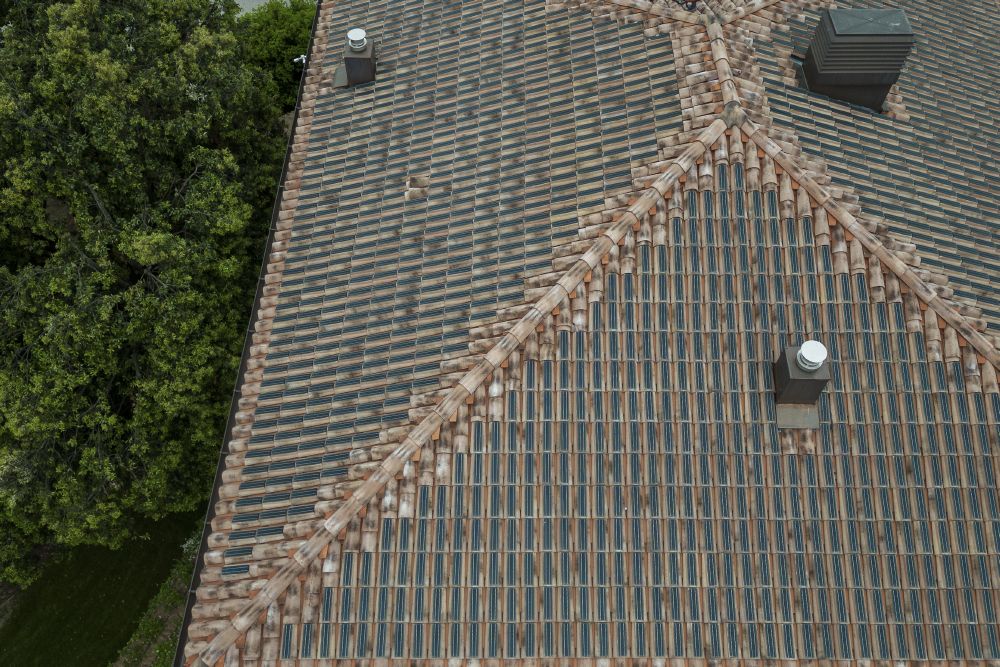How Italian Firms Are Driving the Shift to Sustainable Homes
Text and photos by Agostino Petroni/Parallelozero
Abridged by Syharn Shen (沈思含)
How Italian Firms Are Driving the Shift to Sustainable Homes
Text and photos by Agostino Petroni/Parallelozero
Abridged by Syharn Shen (沈思含)

Tiziana Monterisi and Alessio Colombo, Rice House co-founders, at their Biella headquarters, where they innovate with rice by-products for home insulation.
In the picturesque hamlet of Adorno Micca, nestled in the Italian Alps, a unique three-story building cloaked in lush-green ivy stands as a testament to sustainable living. Owned by Tiziana Monterisi, a 48-year-old bio-architect, this home is not just a dwelling but a declaration of how buildings can harmonize with the environment. Monterisi, utilizing rice byproducts, has embarked on a journey to redefine the construction industry's impact on both human health and the planet. Her philosophy is that our homes should be a reflection of our commitment to sustainability, an idea that resonates deeply in today's climate-conscious world.
The urgency for such innovation is underscored by the United Nations Environment Programme Finance Initiative, which highlights that 40% of carbon dioxide emissions contributing to global warming are produced by our housing sector. In response, the European Union has been championing sustainable housing, a mission that faces significant hurdles in Italy due to its vast array of old or poorly constructed homes. Despite these challenges, the Italian government introduced the Superbonus scheme in 2020, offering a 110% tax rebate for environmentally friendly home renovations. This initiative, although plagued by bureaucracy and corruption, has ignited a wave of interest in sustainable housing.

Alessio Colombo of Rice House, demonstrating the application of their sustainable rice by-product insulation in their headquarters' attic.
Monterisi's choice of rice byproducts as a building material is a nod to both tradition and innovation. For centuries, local communities have utilized rice straw and husk, leftovers from the province's rice harvest, for construction. Monterisi's company, Rice House, has perfected the use of these materials to create homes that are not only sustainable but also healthy, avoiding the toxic components found in conventional building materials. This initiative has led to the development of 30 different construction components and the renovation of over 100 homes throughout Italy. Rice House's ambition doesn't stop there; they are now aiming to construct homes entirely from rice byproducts.
Parallel to Monterisi's work, Bruno Bellò's company, Clivet, based in Feltre, is revolutionizing home heating and cooling systems through electric heat pumps. Since its inception in 1989, Clivet has focused on reducing dependency on fossil fuels, offering a solution that is both energy-efficient and environmentally friendly. Their Smart Living system, a synergy of heat pumps, ventilation, and sensors, optimizes the internal environment of a home, ensuring comfort with minimal energy consumption.

Mario Cunial, R&D director at E-coppo in Treviso, presents a roof tile ingeniously incorporating a small photovoltaic panel.
The narrative of sustainable innovation extends to Veneto, where Industrie Cotto Possagno harnesses the region's rich deposits of marine clay to produce roof tiles. In a blend of tradition and innovation, they have developed E-coppo, a clay tile designed to integrate photovoltaic panels without compromising the aesthetics of Italy's historic cityscapes. This invention not only addresses the aesthetic concerns of solar panels in historic centers but also opens up new possibilities for energy efficiency and sustainability in construction.
These stories from Italy serve as a beacon of hope and innovation in the face of climate change. From Monterisi's bio-architectural endeavors with rice byproducts to Clivet's energy-efficient heat pumps, and Industrie Cotto Possagno's aesthetically pleasing solar tiles, Italy is showcasing how ancient traditions and modern technology can merge to pave the way for a sustainable future. These initiatives embody a profound respect for the environment, highlighting the essential role of sustainable building practices in mitigating global warming.

A building roof in Treviso featuring E-coppo's tiles, which seamlessly integrate small photovoltaic panels for solar energy.
Contact Us | Plan a Visit | Donate
8 Lide Road, Beitou 11259, Taipei, Taiwan
886-2-2898-9999
005741@daaitv.com
©Tzu Chi Culture and Communication Foundation
All rights reserved.
